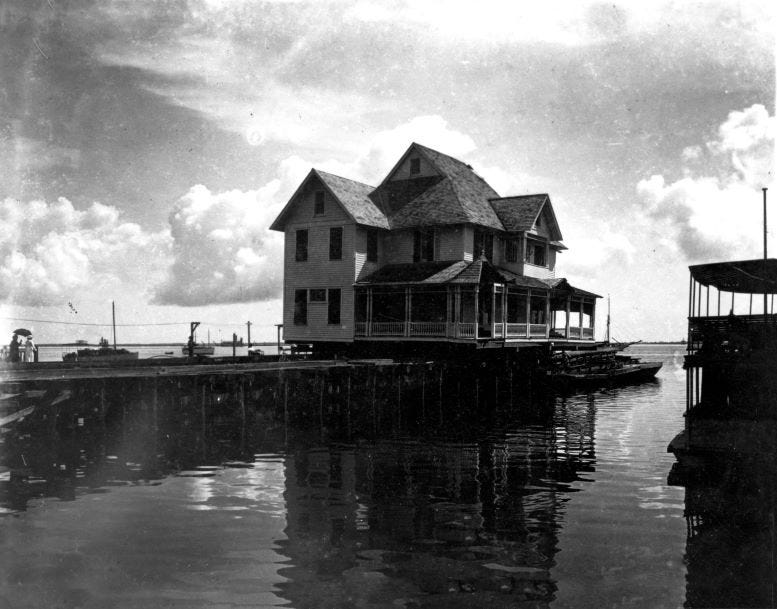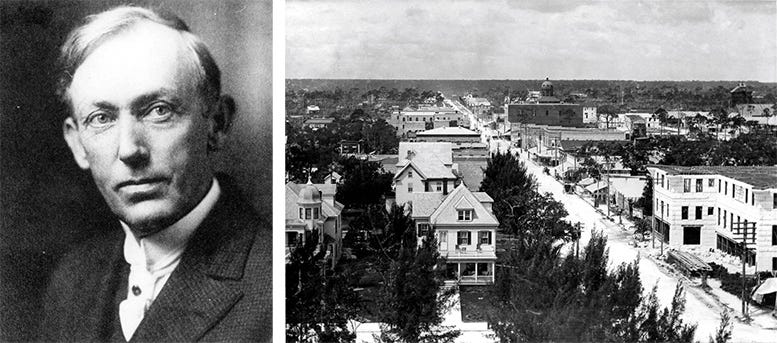Dr. Jackson’s House & Office Moved from Downtown Miami to Southside
The story of Miami's pioneer physician and the relocation of his home and office from downtown Miami to the Brickell neighborhood, aka Southside.

It was said that one could always find Dr. James Jackson during his rounds by following the cheap cigar buds left behind at his patient’s homes. Dr. Jackson enjoyed a cheap cigar called the “Cinco”. Even he would joke and call them “Stinko” given the pungent odor they would emit. It was his practice to leave his cigar on the porch railing before entering the home of his patient. He would often forget to grab it prior to leaving for his next stop.
As the official physician of the FEC and the Royal Palm Hotel, Dr. Jackson kept very busy. He was not only known as Miami’s first physician, but he was known for always being on the move. In September of 1916, Dr. Jackson’s home and office made the news for also being on the move.
Dr. James Jackson Arrives in Miami

Like so many other pioneer Miamians, Dr. James Jackson was made aware of the area following the freezes of 1894 and 1895. At the time, Dr. Jackson was a young physician practicing medicine in Bronson, Florida with his father. Bronson was a small town that experienced a mass exodus when the freezes of 1894 - 1895 destroyed the citrus industry.
It was around this time that Dr. Jackson met J.R. Parrott, Flagler’s right hand man, who offered Jackson a job to be the Florida East Coast Railroad surgeon at the soon-to-be terminus of the railroad at Biscayne Bay. In April of 1896, Jackson decided to take a trip to check out the place he would call home if he chose to take the job.
Dr. Jackson took the train to Fort Lauderdale and then traveled to the mouth of the Miami River by a small steamboat. The availability of places to stay were scarce. There was a moored steamboat called Rockledge that many newcomers would stay. The Hotel Miami was still under construction. There were more people arriving than the area could accommodate.
Jackson walked north on Avenue D (today’s Miami Avenue), and began to inspect the area that would become Miami. In less than an hour, Jackson walked the length and width of what had been developed at that point. Disappointed in what he saw, he went back to the landing to determine when he could catch the next boat back to Fort Lauderdale. He was informed that there wouldn’t be any transportation to Fort Lauderdale until the train arrived a few days later.
Resigned to staying until the train arrived, Dr. Jackson took the opportunity to get to know the early settlers. He became very impressed with the enthusiasm of the area. By the time the train arrived on April 15th, Jackson had made the decision to take the job and relocate himself and his wife to the wilderness that would become Miami.
Keep reading with a 7-day free trial
Subscribe to Miami History to keep reading this post and get 7 days of free access to the full post archives.



